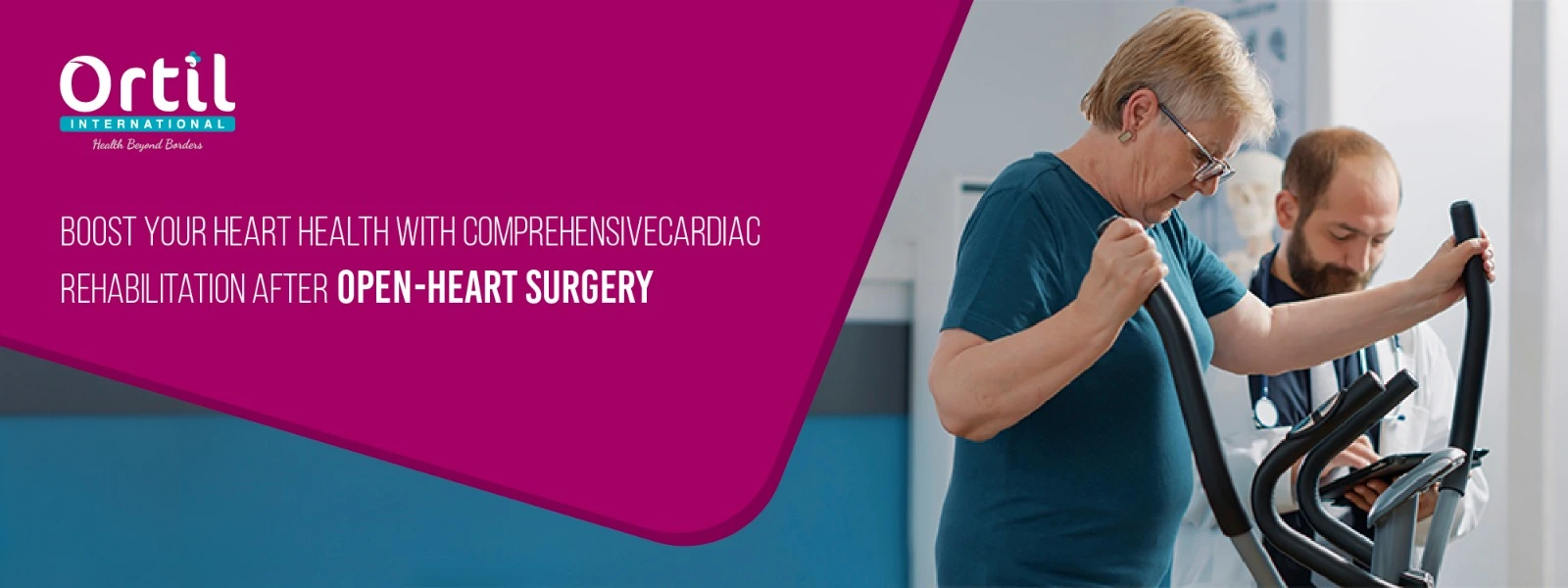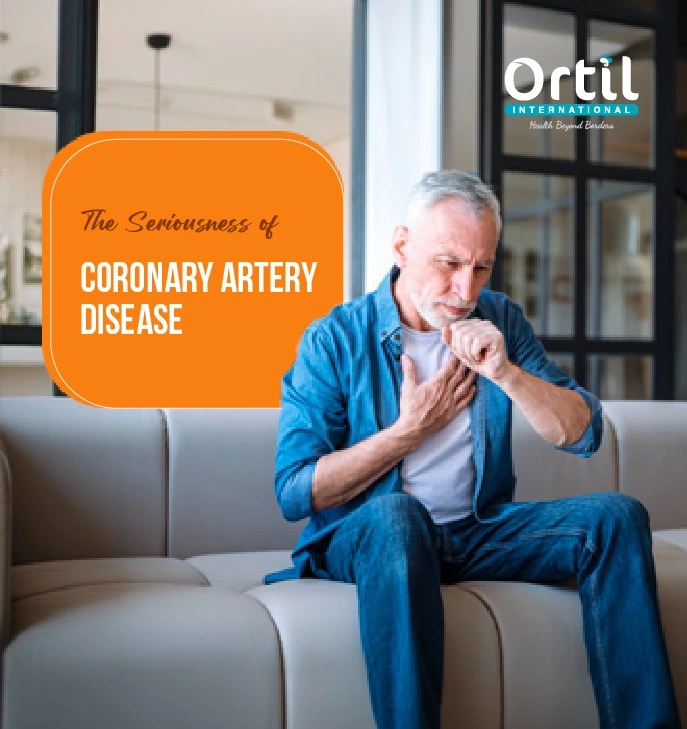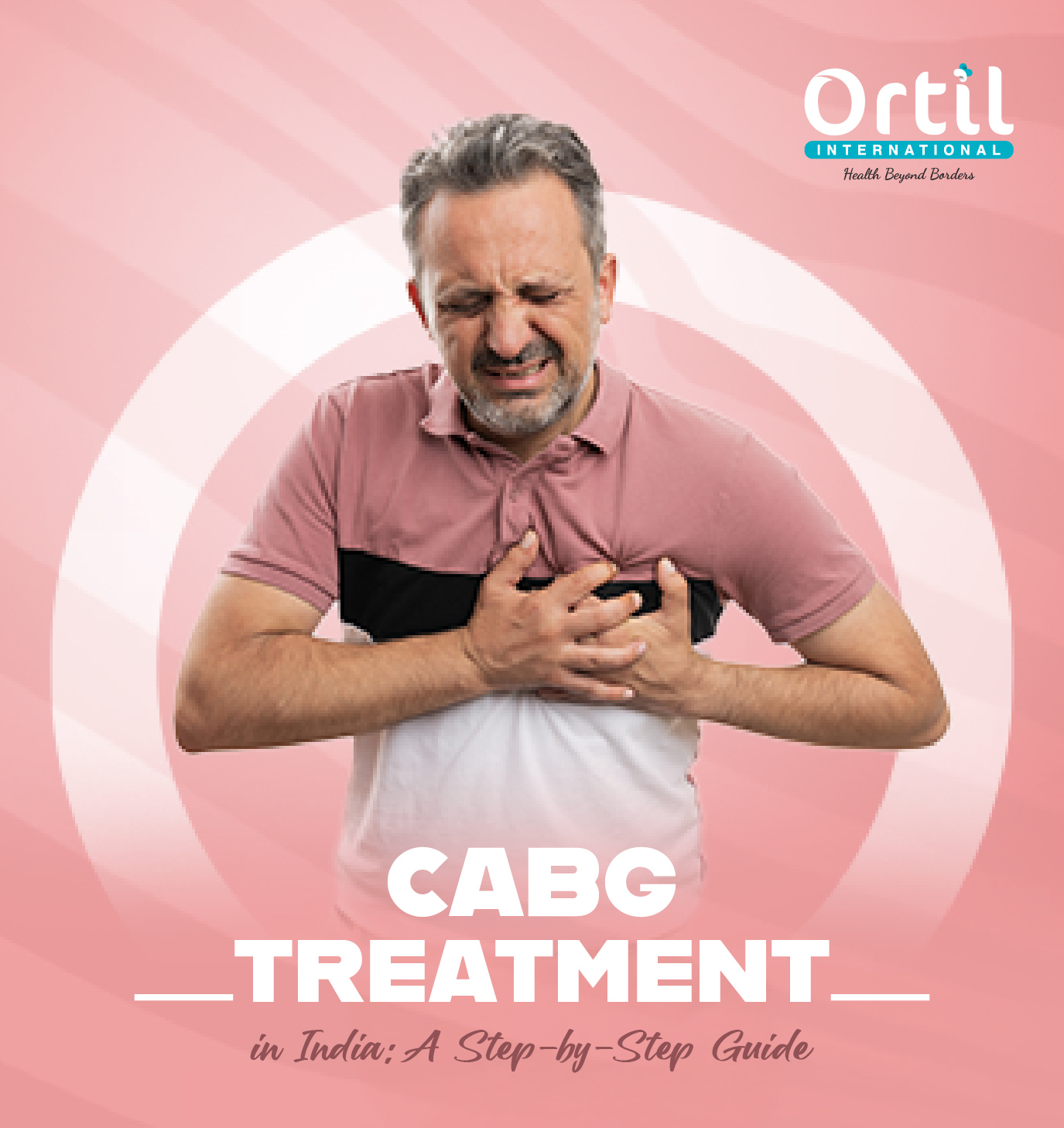The importance of cardiac rehabilitation after open heart surgery
Cardiac rehabilitation is essential after open heart surgery because it is crucial for enhancing the ability of patients to function effectively and resume their daily activities with maximum cardiovascular health. Additionally, it plays a vital role in educating patients and reducing the risk of future heart complications.

What is Cardiac Rehabilitation?
Cardiac rehabilitation is a set of instructions and exercises for cardiac patients. It is essential for patients to have a healthy life to avoid any further heart diseases. Each patient has a different level of capacity for doing exercises that promote heart health. So, the physical therapist designs a unique set of exercise programs for each patient and then gradually increases the intensity of these exercises as the patient progresses.
After undergoing heart surgery, it is highly recommended for patients to engage in cardiac rehabilitation in order to maximize the benefits of the surgery and promote overall heart health and recovery.
Importance of Cardiac Rehabilitation
After having heart surgery, it's really important to take part in a cardiac rehabilitation program. This program helps you recover by giving you exercise instructions, teaching you about how to stay healthy, and providing professional advice. Unfortunately, not many people know how helpful and important it is to take part in cardiac rehabilitation after heart surgery. The importance of cardiac rehab is mentioned below:
- Improved Cardiovascular Health
- Reduced Risk of Future Cardiac Events
- Increased Exercise Tolerance
- Better Management of Risk Factors
- Improved Quality of Life
- Psychological Support
- Increased Survival Rates
- Personalized Care Plans
- Education on Heart-Healthy Lifestyle
What are the five main components of cardiac rehab?
Cardiac Rehabilitation is a program designed to provide training and guidelines for individuals with heart conditions. It begins during the patient's hospital stay after cardiac surgery and continues with a well-structured follow-up routine. Patients also receive a personalized home exercise plan and guidelines for their optimum cardiac health.
Patient Education: Patient education is the most essential part of rehabilitation because the patient’s awareness of the precautions can help prevent complications after surgery.
Exercise Training: Each patient has a unique condition after surgery so the physical therapist recommends exercises according to the capacity of each patient. These may include walking, cycling, stair climbing, etc.
Healthy Lifestyle Instructions: A balanced life with a healthy diet and exercise is important for recovery and prevention of future cardiac problems.
Risk Factor Management: Risk factor management is important to prevent future cardiac diseases and to increase the efficiency of surgery.
Psychological Support: It is crucial for patients after heart surgery to manage stress effectively. Psychological support from family members and counseling from healthcare professionals can play a significant role in helping the recovery.
Who Gets Admitted to Cardiac Rehab?
Almost every patient after heart surgery has to go for cardiac rehab, but patients with severe complications may experience delays in starting cardiac rehabilitation due to their condition. It is still important for them to participate once their condition stabilizes. Following are the patients who usually get admitted to cardiac rehab.
- Heart Attack Survivors
- Coronary Artery Bypass Graft Patients
- Angioplasty or Stent Patients
- Heart Valve Surgery Patients
- Heart Transplant Recipients
- Chronic Heart Failure Patients
- Stable Angina Patients
- Peripheral Artery Disease Patients
- Post-Heart Surgery Patients
- Patients with Cardiomyopathy
Conclusion
Many patients ask, “What is cardiac rehab, and why should I participate in it after heart surgery?” Cardiac rehab is one of the essential components for recovery after heart surgery. The importance of cardiac rehabilitation is that it improves heart health, manages the risk factors, and prvent future cardiac events.
FAQs
What is The Success of Cardiac Rehabilitation?
Cardiac rehabilitation has helped reduce mortality rates in cardiac patients and improved their quality of life.
What Exercises are Done in Cardiac Rehab?
Exercises are recommended according to each patient's capacity, but they generally involve walking, stair climbing, aerobic exercises, and running programs.
What are The Goals of Cardiac Rehab?
The goals of cardiac rehab include managing stress, decreasing the risk of cardiac problems, and maximizing heart health.




















